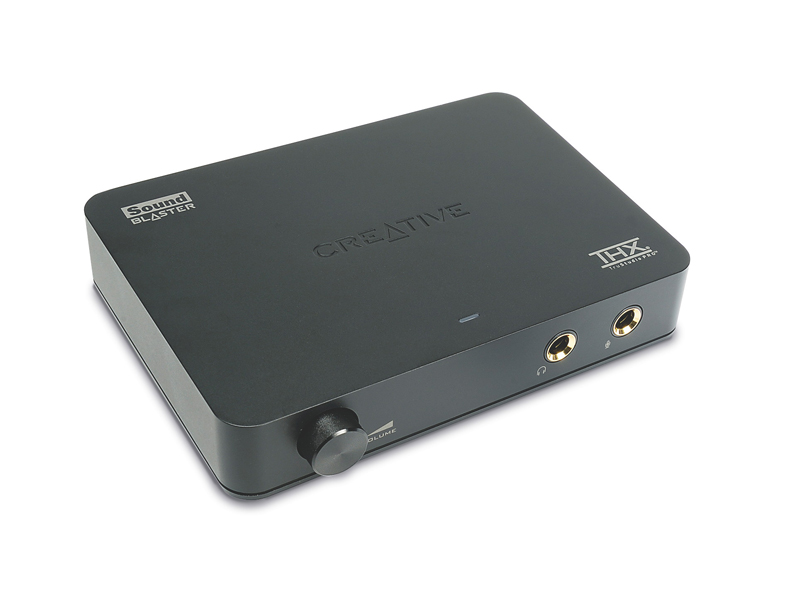Why you can trust TechRadar
For all its high-faluting hi-fi claims, however, the X-Fi HD probably won't win a massive following with the audio purist crowd. For a start, there's no low latency ASIO driver included, which is almost essential to be considered for the 'audiophile'.
Just as critically, it's impossible to open the box up to see the top of the PCB without snapping off the volume knob – so we can't say for sure that each headphone channel has its own amplifier, like the internal X-Fi Titanium HD, to prevent stereo sound leakage. More importantly it means no removable op-amps for those who like to fiddle.
Less crucial is that, unlike the Asus Xonar drivers, there's no option in the control panel to match the output of the headphone amp with the requirements of a heavy duty set of cans.
Does that matter? Probably not, because these are things that the vast majority of us wouldn't even notice after they've been pointed out. What you do need to know is that the sound quality is good, and it can drive studio-grade headsets to produce powerful, rich soundscapes with a very evenly balanced tone. Perhaps a little light on the bass by default, but nothing to complain about.
Technically, it benchmarks some way off the Titanium HD in the RMAA tests, but it's also around half the price of that card and works with laptops. We'd defy most to tell them apart in blind tests.
Compared to the majority of USB sound cards, it's night and day in performance – so long as you have a headset or speakers that can handle the differences, of course. What's more, it's a great choice for games thanks to the EAX driver – which we'd take over the rival Dolby systems any day.
It may seem pricey, but it's about as good as you're going to get from a USB system without moving up to truly professional and more costly options. If you're still balking at the cost, consider that it's cheaper than buying, say, a Creative X-Fi Go! Pro and separate headphone amp – which won't work as well anyway.
We liked
Good sound quality with a ton of high end connections for hooking up to a hi-fi or high-impedance headphones. The difference between this and on-board sound is palpable, whether you're playing games, watching movies or listening to songs.
We disliked
Like most Creative cards, the appeal is still strongest for gamers after high-quality sound and EAX. Sealing in the op-amps and not quite meeting the benchmarks we expected may turn real audiophiles off.
Follow TechRadar Reviews on Twitter: http://twitter.com/techradarreview
- 1
- 2
Current page: Creative Sound Blaster X-Fi HD review: Verdict
Prev Page Creative Sound Blaster X-Fi HD review: OverviewThe TechRadar hive mind. The Megazord. The Voltron. When our powers combine, we become 'TECHRADAR STAFF'. You'll usually see this author name when the entire team has collaborated on a project or an article, whether that's a run-down ranking of our favorite Marvel films, or a round-up of all the coolest things we've collectively seen at annual tech shows like CES and MWC. We are one.
